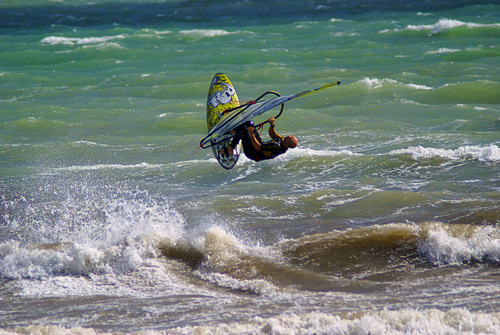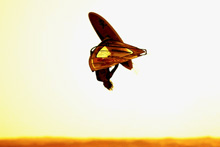
In this instalment of his comprehensive series examining every aspect of wavesailing, Jem Hall looks to inspire you to add some windsurfing specific training to your sailing…
Well, the forecast for 2009 being the hottest summer on record turned out to be nonsense, and as I write we’ve just had one of our windiest Julys for a good few years. From the number of happy smiling faces I see at beaches around the country, it’s been gratefully received, but the feedback I get – sorry, I mean the groans about how stiff and sore people are – really increase after a double or triple session over a weekend. So, ask yourself the question: are you fit enough to be not only a windsurfer, but more specifically a wavesailor?
Summer’s warm water and smaller waves will soon give way to autumn and winter’s colder conditions and the arrival of some proper swell pumping across the Atlantic or North Sea. This means wind, waves and gnarly days, so by failing to prepare you are therefore preparing to fail. Sure you hit the gym, go running, swimming, SUPing and work on your core strength and flexibility, but we all know that the best fitness training for windsurfing is windsurfing. So when the conditions are not that windy or wavy you still need to approach these sessions with the same focus and desire to improve your wavesailing – that is of course if YOU WANT to be a wavesailor.
With that in mind, this month we’ll look at how to get the best out of big boards and the moves that make you better in readiness for the wave arena. I’ll also implore you to sail as you would in the waves – even though conditions may be flat or bump-&-jump. If you don’t take the opportunity to go sailing, even in light winds, it will mean you lose fitness, balance, co-ordination, and – heaven forbid – maybe your windsurfing mojo.
Psychology
By their very nature wavesailors should be looking for action and covering their ground quickly. In many wave breaks you have to get up to speed quickly just to get out. Where the action is closer in, if you get planing quickly and up to top speed then you’ll score a couple of sweet jumps on the inside. So first up, put a bit of passion and commitment into your early planing and speed. As you now know you’ll need all your fundamental windsurfing skills to be on fine form, so if you’re not planing early find out why and fix it. (And yes, a clinic with me or buying Beginner to Winner will help you.)
A wavesailor’s mindset is focused on getting the maximum amount of runs as possible through ‘the break’ in order to score more jumps on the way out and more rides on the way in. This means that those of you who do one-mile reaches out to sea to check your crayfish pots (or whatever’s out there) are not pushing it enough. On some beaches I get six reaches in before Johnny Grooverider gets two. No matter what move you’re learning, you’ll get better at it by shortening your reaches – a lot. If your reach is short you’re forcing yourself to plane earlier, get to top speed quicker (in all winds), and fly upwind no matter whether you’re well or moderately powered. So please shorten those reaches, plane earlier, sail faster, and honk upwind – if YOU WANT to be a wavesailor.




